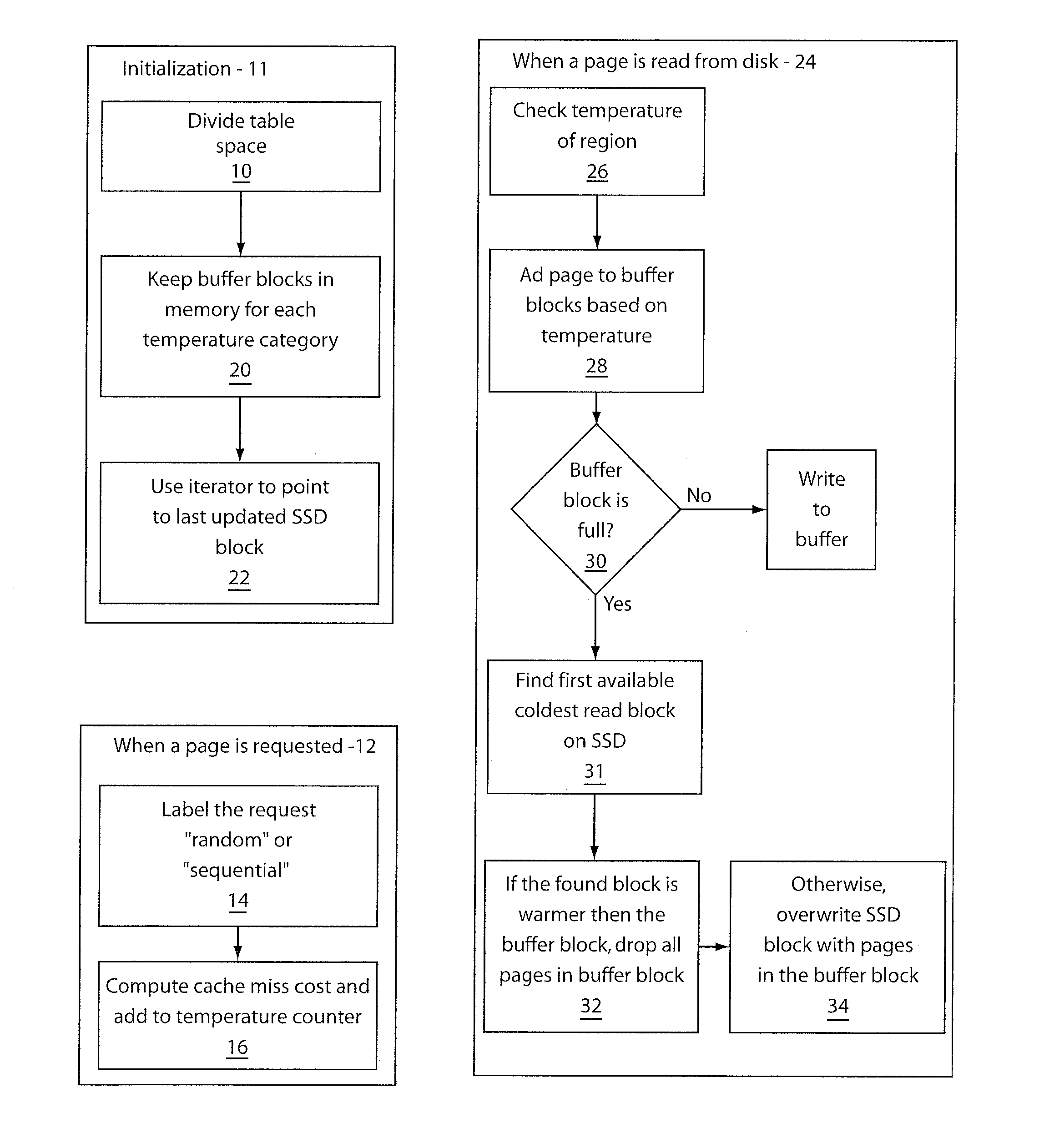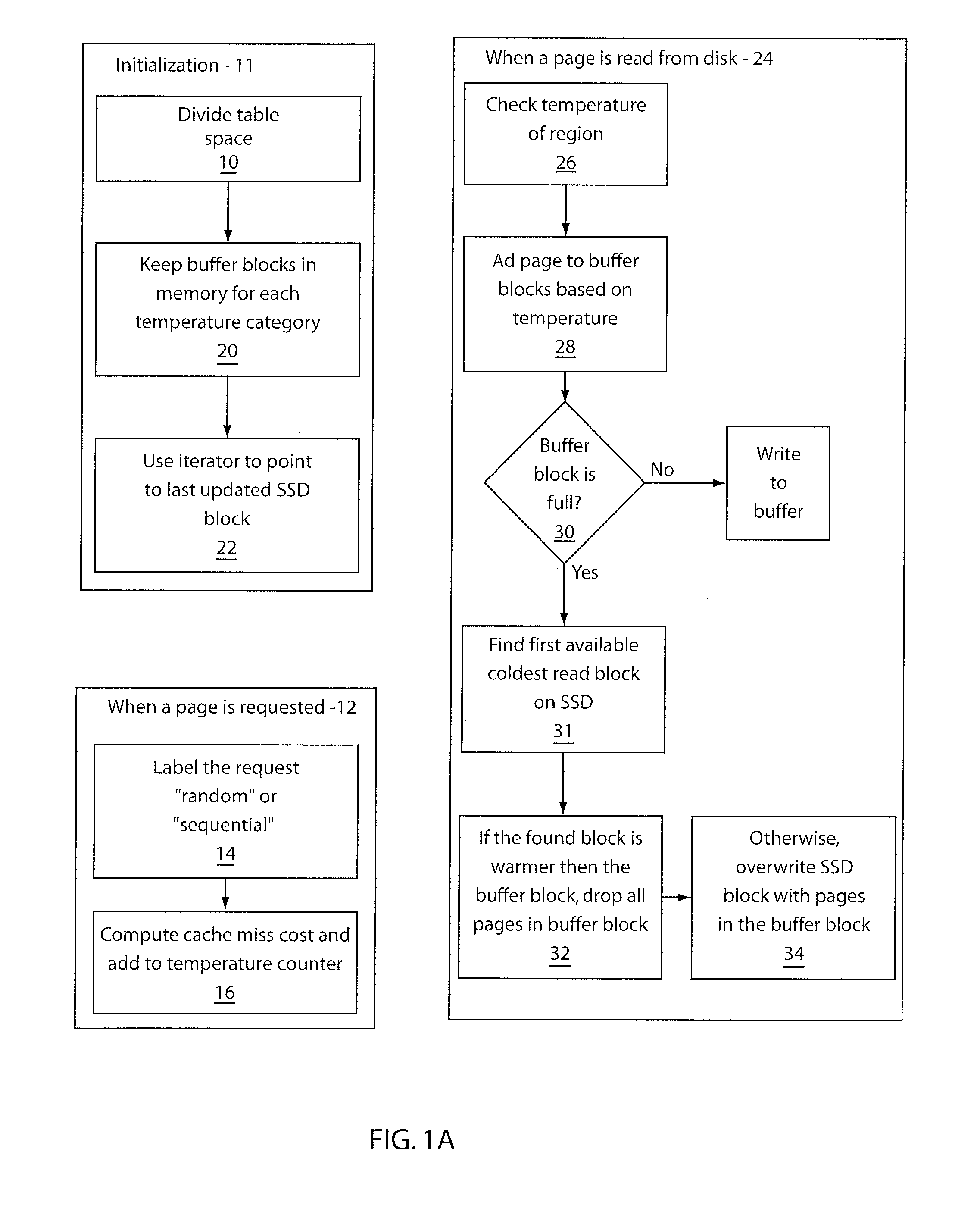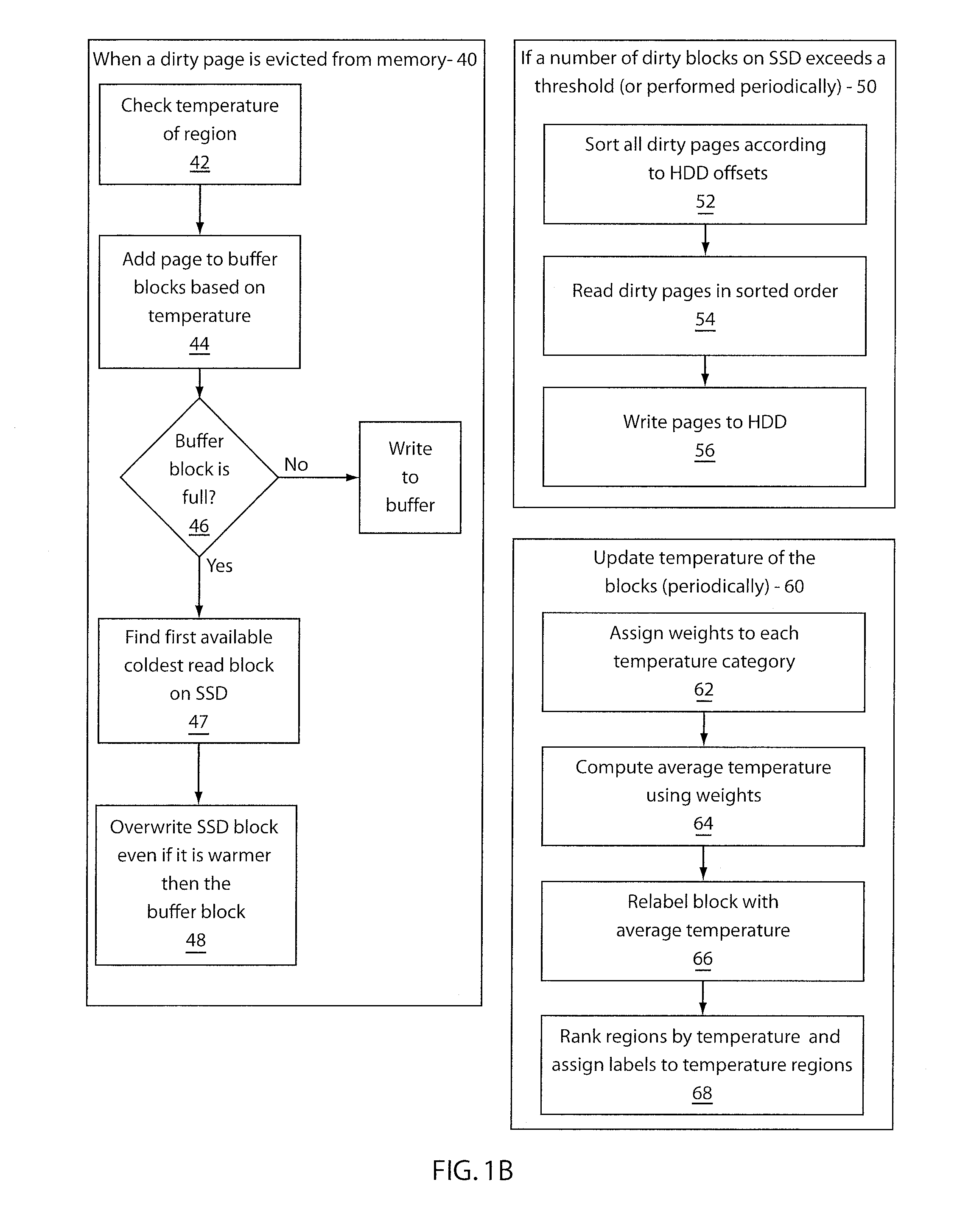Temperature-aware buffered caching for solid state storage
a buffering and temperature-aware technology, applied in the direction of memory adressing/allocation/relocation, instruments, computing, etc., can solve the problems of insufficient replacement algorithms for memory buffer pools, insufficient ssds, and insufficient current replacement algorithms for ssds
- Summary
- Abstract
- Description
- Claims
- Application Information
AI Technical Summary
Problems solved by technology
Method used
Image
Examples
Embodiment Construction
[0018]In accordance with the present principles, techniques for using solid-state storage as an extension of main memory in database management systems is disclosed. With these techniques the cost of flushing dirty pages in a random order to the disk is eliminated, and random disk accesses for read requests are prevented as much as possible. This is achieved by continuously monitoring disk access patterns to identify “hot” regions of the disk. With an adaptive mechanism, the regions that are getting colder over time are replaced with hotter regions to get maximum performance from the SSD. Using realistic work-loads (e.g., transaction processing performance council (TPC) workloads TPC-H and TPC-C), experimental confirmation that with a relatively small SSD space used the response time of the system is increased dramatically. A page is a smallest transfer unit between a secondary storage and a main memory as defined by, e.g., a database administrator. Typical sizes may be 4 KB, 8 KB, ...
PUM
 Login to View More
Login to View More Abstract
Description
Claims
Application Information
 Login to View More
Login to View More - R&D
- Intellectual Property
- Life Sciences
- Materials
- Tech Scout
- Unparalleled Data Quality
- Higher Quality Content
- 60% Fewer Hallucinations
Browse by: Latest US Patents, China's latest patents, Technical Efficacy Thesaurus, Application Domain, Technology Topic, Popular Technical Reports.
© 2025 PatSnap. All rights reserved.Legal|Privacy policy|Modern Slavery Act Transparency Statement|Sitemap|About US| Contact US: help@patsnap.com



